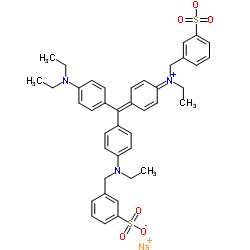Removal of Acid Violet 17 from aqueous solutions by adsorption onto activated carbon prepared from sunflower seed hull.
N Thinakaran, P Baskaralingam, M Pulikesi, P Panneerselvam, S Sivanesan
Index: J. Hazard. Mater. 151(2-3) , 316-22, (2008)
Full Text: HTML
Abstract
The adsorption of Acid Violet 17 (AV17) was carried out using various activated carbons prepared from sunflower seed hull (SSH), an agricultural solid waste by-product. The effect of parameters such as agitation time, initial dye concentration, adsorbent dosage, pH and temperature were studied. The Langmuir and Freundlich isotherm models were applied and the Langmuir model was found to best report the equilibrium isotherm data. Langmuir adsorption capacity was found to be 116.27 mg/g. Kinetic data followed pseudo-second-order kinetics. Maximum colour removal was observed at pH 2.0. It was observed that the rate of adsorption improves with increasing temperature and the process is endothermic. The adsorbent surface was analysed with a scanning electron microscope. The results indicate that activated sunflower seed hull could be an attractive option for colour removal from dilute industrial effluents.
Related Compounds
| Structure | Name/CAS No. | Molecular Formula | Articles |
|---|---|---|---|
 |
Acid violet 17
CAS:4129-84-4 |
C41H44N3NaO6S2 |
|
An investigation into the enhancement of fingermarks in bloo...
2013-09-01 [Sci. Justice 53(3) , 321-7, (2013)] |
|
Comparative mutagenicity of two triarylmethane food dyes in ...
1981-08-01 [Food Cosmet. Toxicol. 19(4) , 419-24, (1981)] |
|
[Development and clinical evaluation of a new urinary protei...
1991-04-01 [Rinsho Byori. 39(4) , 398-404, (1991)] |
|
Orange peel as an adsorbent in the removal of acid violet 17...
2001-01-01 [Waste Manag. 21(1) , 105-10, (2001)] |
|
Bioaccumulation of the synthetic dye Basic Violet 3 and heav...
2011-02-28 [J. Hazard. Mater. 186(2-3) , 1541-52, (2011)] |